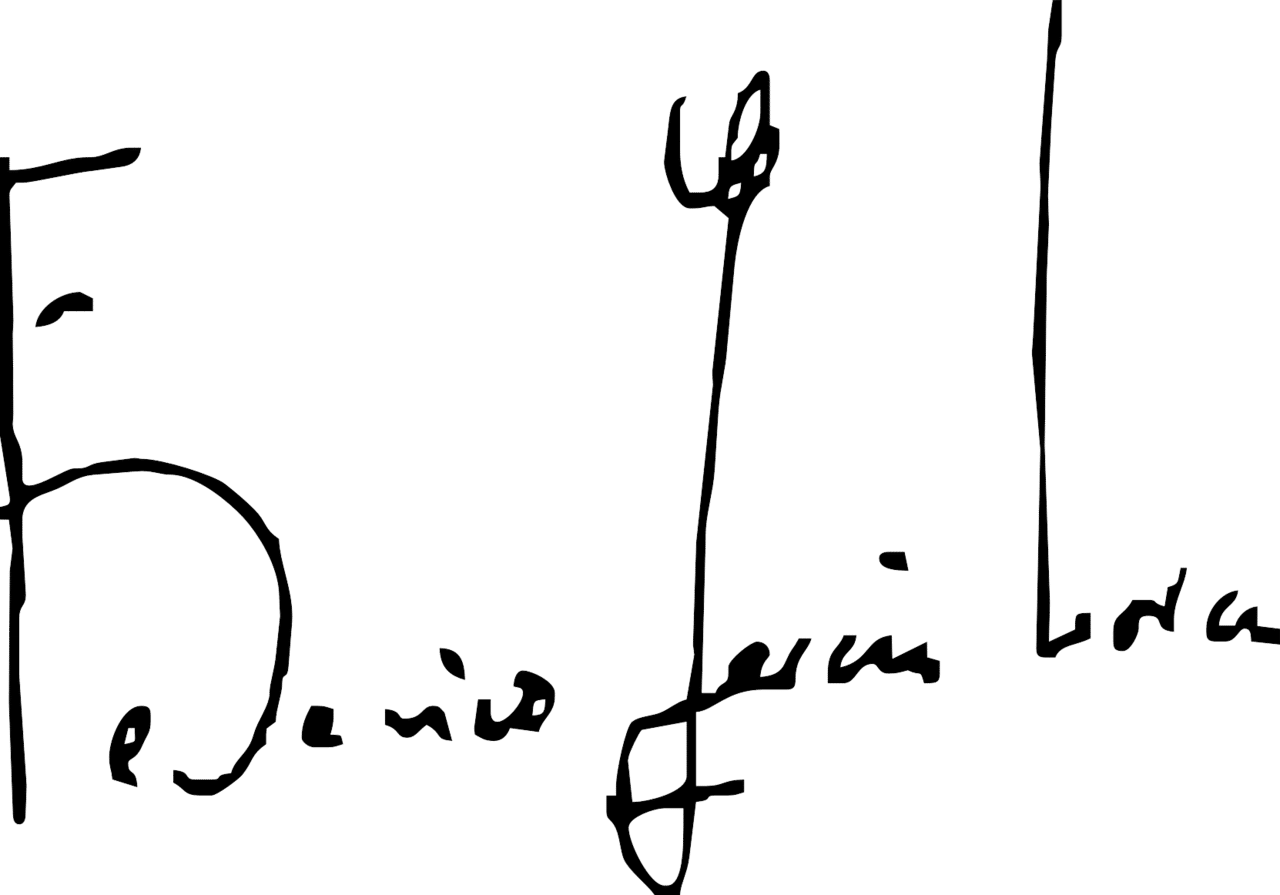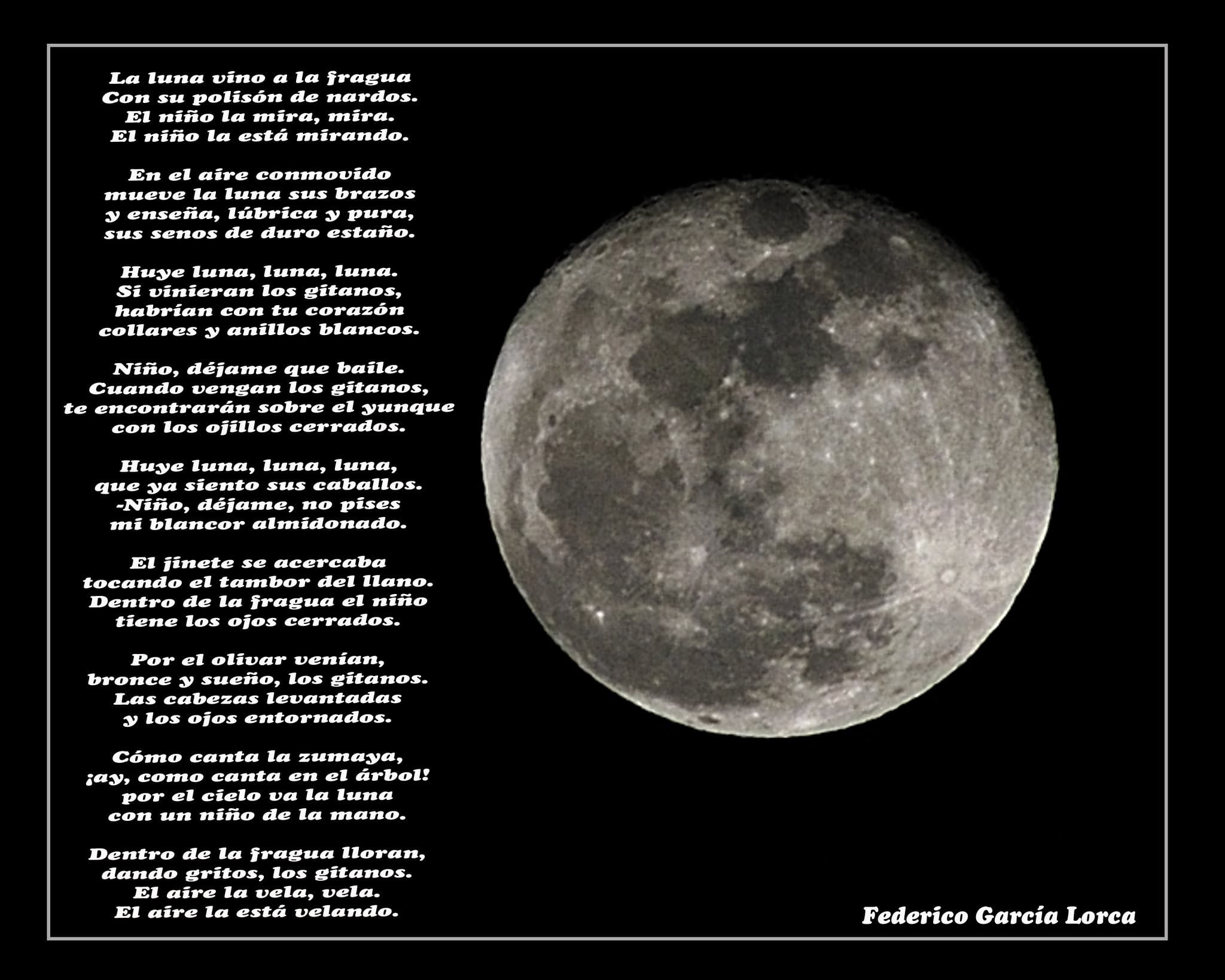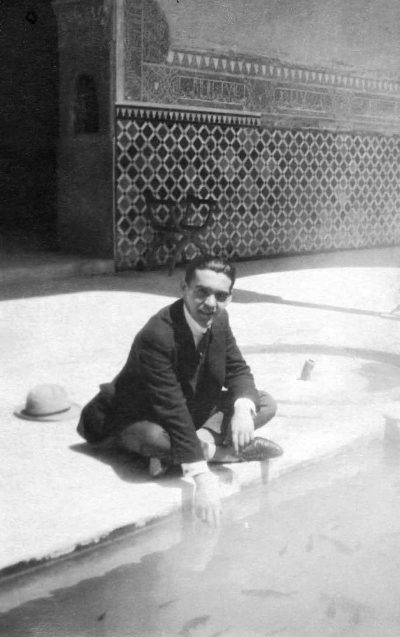
Signature of Federico García Lorca
If something stood out García Lorca It was in the mastery with which he was able to elaborate the Symbols which he used both in his poems and in his plays. Here we explain some of the most used:
La month It is the most complex of these symbols since it contains different meanings that are often opposed to each other. Life and death are expressed with this symbol by Lorca as well as fertility and sterility, which is still a clear reference in both antitheses to the life cycle. Other authors point out that the Moon is for Federico García Lorca a symbol of beauty and perfection.

Romance of the moon, moon. // Image - Flickr / Etrusco
The metals They are another of the symbols that abound among the many pages of the Granada-born author and when they appear they are synonymous with a bad omen since they are usually part of edged weapons that cause or trigger the death of some of the characters. Death, as in the moon or in metals can appear in the water, as long as it is stagnant. If it flows free, it is a symbol of sex and love passion.
Finally horseback riding, represents masculine virility, although there are those who also see in him a messenger of death. Be that as it may, the identification with the passion of a man seems much clearer than that of the envoy of the grim reaper.
Lorca's symbols in the main books of Federico García Lorca
In order to make it clearer which are the elements that Lorca used to use regularly in his works, as well as the meaning that he gives in each of them, we have selected some of his works in which we will establish the symbols and suggestive images and its meaning.
The symbolism of Lorca in Bodas de Sangre
Bodas de sangre is one of Lorca's best known works, where he tells us the story of two families with misfortunes but whose children are going to be married, despite the fact that there is not really love between them.
However, we are talking about a drama, and the story takes a radical turn when the true love of the bride enters the scene.
Among the elements that you can find in this work are:
-
Land. The earth for Lorca in this work meant the mother, because it makes a similarity because the earth is capable of giving life like the woman, and also of caring for the dead.
-
Water and blood. Both one and the other are two liquids and both bodies and fields are able to nourish themselves. Therefore, for the author this has a meaning of life and fertility.
-
Knife. The knife is an object that causes pain. For García Lorca, it is a symbol of tragedy, of a death that is about to come or of a threat that looms over other characters.
-
The colors. En Bodas de sangre there are several colors represented that have different meanings. For example, the pink color in which Leonardo's house is painted, the author comes to represent the hope of a new life, or the change for a new life. On the other hand, the red color that is seen in the skein is the color of death (the skein itself symbolizes the thread of life that each person has and how it can be cut); the color yellow is also a symbol of tragedy and an omen that a death is about to occur. And, white is the color of the funeral rite.
-
Moon. It represents the woodcutter in Blood Wedding, but it implies violence in the sense that a woodcutter cuts off a life and makes a river of blood flow, hence the talk in that sense.
-
Horse. Referring above all to Leonardo, he speaks of strength, virility, unbridled passion.
Lorca's symbolism in the Gypsy Ballads
El Gypsy romance It is made up of 18 romances that talk about night, death, the moon ... with two central plots: the gypsies and Andalusia. It tells how there is a gypsy people who live on the margins of society and who are persecuted by the authorities, although García Lorca does not describe the day-to-day life of that town, but rather different poetic situations through which they find themselves.
In this case, we find:
-
Moon. A symbol that he uses almost always in all his works. In this one, she speaks of femininity, of sensuality, but also of a presaged death by "attracting into her spell" anyone who looks at her.
-
Water. For Lorca, water represents movement and life. When that water does not move, then it speaks of lost passion and death. Instead, when it is vibrating, it moves, etc. it is said that there is a strong and overflowing passion, a desire to live.
-
The hole. The well indicates that there is no way out, that passion no longer lives in that place.
-
Horse. Again we present a horse with the same definition as in Blood Wedding. We speak of virility, of wild passion. But also of death. In this case, the horse would be the gypsy for his free life, for doing what he wants, but also focusing on a foretold death.
-
The rooster. In the gypsy ballads, the rooster is the symbol of the sacrifice and destruction of the gypsies.
-
The civil Guard. They represent the authority, therefore symbols of destruction and death over the gypsies.
-
Mirror. For Lorca, the mirror is the Paya culture, as well as the fixed home and the sedentary life of people who clash with the life of gypsies.
-
The alcohol. He adds it to represent a symbol of the "civilized world", but apart from the gypsies. It's more for the sedentary world, payo.
Lorca's symbolism in Bernarda Alba's house

En La casa de Bernarda Alba We meet a female protagonist, Bernarda, who, after being widowed at age 60 for the second time, decides that her next 8 years are going to be in mourning. What forces their daughters to be sexually repressed and unable to continue with their lives. However, when Pepe el Romano appears on the scene, with the aim of marrying Bernarda's eldest daughter, the conflict breaks out. All daughters do what the mother says. All except the youngest, the most rebellious and crazy.
Once the work has been briefly summarized, the Lorca symbolism that you can find in this work is the following:
-
Moon. As we have commented before, the moon is a symbol of death, but it is also a symbol of eroticism, desire, lust ... Therefore, we can say that for both the mother and the daughters, except the youngest, it would be a symbol of death; On the other hand, for Adela, the youngest, it would be eroticism, passion, etc.
-
The blood. In addition to representing life, it can also indicate death and the sexual.
-
Horse. It is the clear representation by García Lorca of masculinity, in that it represents male eroticism, sexual desire, etc.
-
Bernarda Alba's cane. The staff is an object of command and power.
-
Sheets. In the work, all of them embroider sheets, which makes one understand that they are ties that are imposed on women.
-
Bernarda Alba's own house. Because she forces her daughters and herself to be in rigorous mourning for 8 years, Bernarda Alba's house becomes a prison for all the members who reside in it.
-
Adele. Adela's character means rebellion, revolution, the search for freedom, and also youth.
-
The dog. In the play, the dog has a double meaning since, on the one hand, it announces death (or tragedy) by warning of the arrival of man; on the other hand, it implies loyalty, especially in the character of Poncia.
-
Sheep. This animal has a lot to do with Jesus and is related to Adela since, like many other sheep, it ends up being sacrificed by others.
Thank you very much
To you for visiting us!
Hello
Very good content, it has helped me a lot in a language work.
I'm here on homework too. XD